- europages
- >
- COMPANIES - SUPPLIERS - SERVICE PROVIDERS
- >
- mems sensors
Results for
Mems sensors - Import export
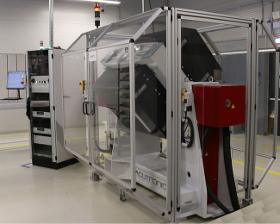
MERECS ENGINEERING GMBH
Germany
We develop fully automatic test systems for inclination sensors and inertial sensors (MEMS, tilt sensors) according to customer requirements. With these systems, combined temperature and motion simulation is possible. We set quality standards with rate tables from Acutronic, for example. With the help of multi-axis rate tables, we can precisely position DUTs in end-of-line (EoL) test operations or for development purposes and calibrate and test them under temperatures of e.g. -40°C and up to 120°C. Merecs Engineering can also connect the test system to our customer's IT infrastructure, set up databases and automatic data analysis using Mircosoft PowerBI, so that important key figures such as First Pass Yield (FPY), process capability, system availability, statistics and trends are continuously updated and displayed on online dashboards. For example, more than 100 DUTs are possible per test run.
Request for a quote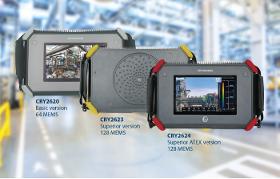
SDT ULTRASOUND SOLUTIONS
Belgium
Unlock a new era of industrial maintenance with the CRYSOUND Acoustic Imager. Our portable condition monitoring solution is designed to deliver unparalleled accuracy and adaptability in detecting compressed air leaks and partial discharges in the most challenging environments. The CRY2624 is certified with an explosion-proof level II 3G Ex ic IIC T5 Gc rating. It’s your trusted companion in chemical plants housing hazardous flammable gases and areas with strict explosion protection requirements. Our ultrasound camera features 128 state-of-the-art MEMS sensors, ensuring ultra-sensitive detection of compressed air leaks. It covers distances of up to 120 meters and displays the exact defect distance on the camera screen. The CRYSOUND Range caters to all your needs, offering solutions from basic (CRY2620) to superior (CRY2623), including the ATEX-certified CRY2624. User-friendly with just two parameters for most tests, it supports camera mode, video mode, and on-site data recording.
Request for a quote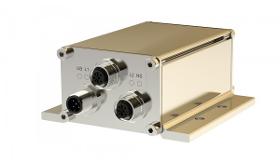
TWK-ELEKTRONIK GMBH
Germany
The inclinometer measures the inclination in the gravitational field by means of MEMS sensors (Micro-Electro-Mechanical-System) with subsequent digitisation and linearisation via controllers. It has a stable aluminium housing (optionally stainless steel) and is highly-resistant to vibration and shock. Casting measures in the housing lead to the achievement of protection class IP 69K. The NBT has a redundant MEMS sensor system, which is used to make a plausibility check inside the inclinometer. Only one position datum is output; the plausibility of this is checked using the second system's position datum. Is the deviation of the two systems higher than a certain value, the sensor will enter the failsafe state.
Request for a quote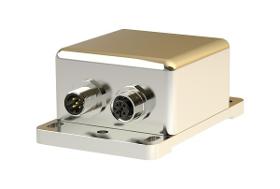
TWK-ELEKTRONIK GMBH
Germany
Registration of inclination in the gravitational field by means of MEMS sensors (Micro-Electro-Mechanical-System) with subsequent digitisation and linearisation via controllers. The housing-based inclinometer (model NBN 65) has a stable aluminium housing (optionally stainless steel) and is highly-resistant to vibration and shock. One or two connectors/socket in the case of CANopen can optionally be selected for connection. Casting measures in the housing lead to the achievement of protection class IP 69K, e.g. for use under water.
Request for a quote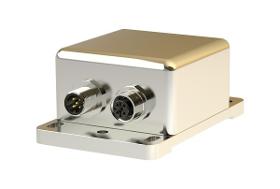
TWK-ELEKTRONIK GMBH
Germany
Registration of inclination in the gravitation field using MEMS sensors (Micro-Electro-Mechanical-System) with subsequent digitisation and linearisation via a controller. Data output is carried out via the CANopen interface or as an analogue signal. The inclination sensor has a stable aluminium housing (optionally stainless steel). Slots are available for mechanical alignment (up to approx. ± 7.5°). In the case of CANopen, one connector or one male/female connector combination can be selected optionally for connection purposes. Casting measures in the housing lead to the achievement of protection class IP 69K, e.g. for use under water.
Request for a quoteDo you sell or make similar products?
Sign up to europages and have your products listed
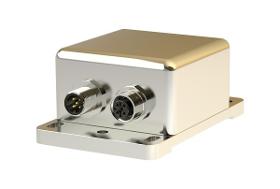
TWK-ELEKTRONIK GMBH
Germany
The sensor system is intended as a component for use e.g. in wind power plants to measure and evaluate vibrations in the mast head. Registration of dynamic accelerations by means of MEMS sensors (Micro-Electro-Mechanical System) with subsequent digitisation by a controller. The device consists of an acceleration sensors, a controller unit and three types of output interface. Data output is carried out via two analogue interfaces with 4 ... 20 mA plus CANopen and via 4 relay contacts (currently 1 error relay contact). The NVA is parameterised via the CANopen interface. This is not galvanically separated. The sensor is equipped with a filter circuit to protect against fast transients and surge voltages of up to 2 kV in the supply. The protection types are IP 69K (housing) and IP 67 (connector/socket). With its good vibration and shock values, the sensor is suitable for use in areas with rough environmental conditions.
Request for a quote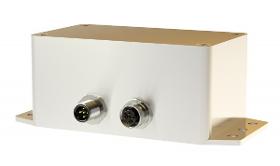
TWK-ELEKTRONIK GMBH
Germany
The sensor system is intended as a component for use e.g. in wind power plants to measure and evaluate vibrations in the mast head. Registration of dynamic accelerations by means of MEMS sensors (Micro-Electro-Mechanical System) with subsequent digitisation by a controller. The device consists of an acceleration sensor, a controller unit and three types of output interface. The main feature is two safety switching contacts (potential-free), which can be used e.g. in the safety chain to undertake safety shut-off in the event of excessively high acceleration values. Data output is carried out via the CANopen interface. The standard or the safety profile can be selected. There are additionally two analogue outputs 4 ... 20 mA, which can be optionally assigned to two of the three measurement axes. Thanks to its high resistance to vibration and shock, the sensor is suitable for use in areas with rough environmental conditions.
Request for a quote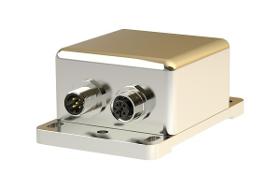
TWK-ELEKTRONIK GMBH
Germany
Registration of inclination in the gravitation field using MEMS sensors (Micro-Electro-Mechanical-System) with subsequent digitisation and linearisation via a controller. Data output is carried out via the CANopen interface or as an analogue signal. The inclination sensor has a stable aluminium housing (optionally stainless steel). Slots are available for mechanical alignment (up to approx. ± 7.5°). In the case of CANopen, one connector or one male/female connector combination can be selected optionally for connection purposes. Casting measures in the housing lead to the achievement of protection class IP 69K, e.g. for use under water.
Request for a quote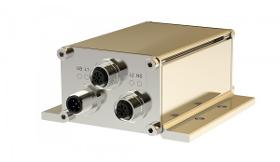
TWK-ELEKTRONIK GMBH
Germany
Registration of inclination in the gravitational field by means of MEMS sensors (Micro-Electro-Mechanical-System) with subsequent digitisation and linearisation via controllers. MEMS sensors are integrated circuits manufactured using silicon bulk micromechanical technology. Double capacities are formed with the aid of moveable micromechanical structures. If these structures are deflected in the case of acceleration, e.g. gravitational acceleration (g), this results in capacity changes, which are registered and further processed using measuring technology. The output voltage follows the function U ~ g * sin α. In this case, the angle α is the sensor's inclination angle measured against the g-vector. These sensors measure precisely, have a long service life and are very robust. The measuring axes operate independently of each other.
Request for a quote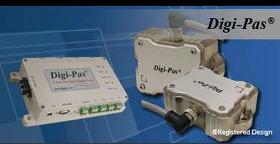
DIGI-PAS UK & EUROPE
United Kingdom
Digi-Pas® DWL5000XY Series is a 2-Axis Inclination Sensor Module that specifically designed to be integrated into a machine/equipment/ structure for real-time simultaneous monitoring of leveling position, tilt angles & vibration measurement. These intelligent modules are embedded with advanced MEMS technology sensor, developed for 2D planar leveling, tilt angle monitoring, alignment and vibration measurement. The 'plug & play' software interface instantly enables application engineers to access sensor modules without the need for tedious and time-consuming programming. Sensor modules are tough, durable, waterproof, shock resistance, small footprint and enabled to communicate through various protocols such as USB, RS232, RS485 & Bluetooth. Digi-Pas® DWL-5000XY is a 2-Axis Precision Inclination Sensor Module of accuracy (0.01° or 175µm/M or 36 arcsec) Digi-Pas® DWL-5500XY is a 2-Axis Precision Inclination Sensor Module of accuracy (0.001° or 18µm/M or 3.6 arcsec)
Request for a quote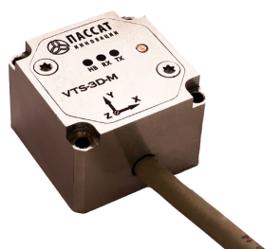
PASSATINNOVATIONS LLC
Belarus
Vibration and temperature sensor with digital signal processing is designed to monitor the vibration and temperature characteristics of industrial equipment. Measuring parameters: - RMS vibrations acceleration in 3 axis - RMS vibrations velocity in 3 axis - RMS vibrations displacement in 3 axis - peak-to-peak in 3 axis - peak factor in 3 axis - temperature of the machine casing - ambient temperature Frequency range - 10-3000 Hz Sensor dimensions: 30x22x30 mm. Different communication channels: Modbus RTU (in standard design), Profibus, Modbus TCP, analog and discrete signals, LoraWan. The sensor can be used as part of distributed systems for monitoring the state of machines and mechanisms, as well as an autonomous tool of emergency protection.
Request for a quoteResults for
Mems sensors - Import exportNumber of results
12 ProductsCountries
Company type